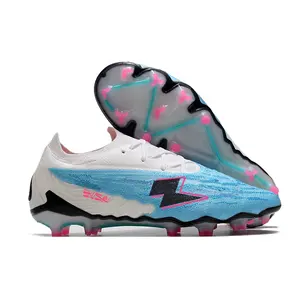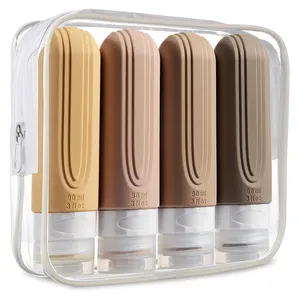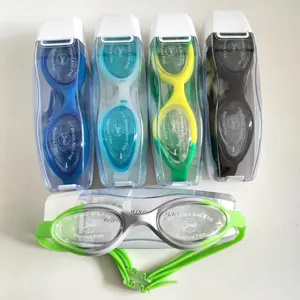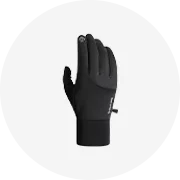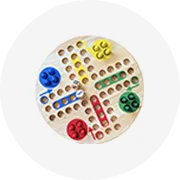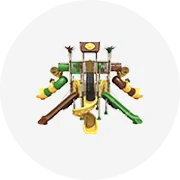Popolare nel tuo settore






JER vendite calde 3d penna per adulti bambini RP700C 3d stampa penna 3d migliori giocattoli
6,00 USD - 7,00 USD
Ordine minimo: 1 insieme





Penna regalo in metallo di lusso con diamante penna con Logo personalizzato penna a sfera in cristallo multicolore con diamante per ragazza
0,20 USD - 0,88 USD
Ordine minimo: 200 parti




JPS OEM Boligrafo De Gel penna a inchiostro Gel Set 0.5mm penne Gel a sublimazione aziendale con Logo personalizzato
0,11 USD - 0,13 USD
Ordine minimo: 100 parti







Set di penne regalo con penna a sfera dal design classico per ufficio esecutivo professionale penna a sfera color oro aziendale personalizzata
1,80 USD - 2,00 USD
Ordine minimo: 500 parti







Personalizzazione cancelleria personalizzata penna gel 0.5mm Amazon vendita a caldo penna gel set di cancelleria forniture per la scuola
0,46 USD - 0,54 USD
Ordine minimo: 100 parti







Penna a sfera del diamante della penna a sfera del metallo della penna del regalo di affari promozionale di stile semplice di modo con il Logo
1,01 USD - 1,28 USD
Ordine minimo: 200 parti







Uni Posca PC-1M Vernice Art Marker Penne Uni Posca Vernice Marcatore Mitsubishi Poster Colore Marcatura Penna Giappone Import
1,60 USD - 1,65 USD
Ordine minimo: 50 parti






Giappone FAI DA TE Scintillio Tubo Vuoto Penna A Sfera Personalizzato Penna In Metallo Con Logo
0,20 USD - 0,65 USD
Ordine minimo: 50 parti


Corea e Giappone di vendita calda di plastica penna 3 anello di colore 3 di inchiostro in 1 gel penna per gli studenti
0,16 USD - 0,35 USD
Ordine minimo: 500 parti





Cancelleria moderna eco friendly carino stile giapponese penne di plastica all'ingrosso 2604
0,55 USD - 0,67 USD
Ordine minimo: 72 parti
Spedizione per pezzo: 0,36 USD






Commercio all'ingrosso giappone e corea del sud penna simpatico cartone animato testa di plastica morbida cancelleria per studenti piccola penna Gel fresca da 0.5mm
0,10 USD - 0,15 USD
Ordine minimo: 100 parti






Pennarello per Graffiti fai da te vuoto 3MM 4.5MM 5MM 6.5MM 8MM 10MM 15MM 30MM pennarello vuoto
0,26 USD - 0,79 USD
Ordine minimo: 1000 parti






Nuovo Stile del giappone di Promozione Vuoto Galleggiante Logo Personalizzato Penna Rossetto FAI DA TE Penna A Sfera
0,19 USD - 0,28 USD
Ordine minimo: 50 parti
Spedizione per pezzo: 0,43 USD












Giappone Olio Lamina D'oro Liquido Penna a Sfera Creativa FAI DA TE Liquido Floater Penna Colorato FAI DA TE Scintillio Vuoto Del Tubo di Torsione Penna A Sfera
0,30 USD - 0,50 USD
Ordine minimo: 50 parti
Spedizione per pezzo: 0,43 USD






Breve Cartone Animato Del Giappone e Corea Del Sud Creativo di Cancelleria Cactus In Vaso Penna di Modo Penna A Sfera Carino
0,59 USD - 0,68 USD
Ordine minimo: 100 parti





Penna OEM Logo personalizzato prezzo all'ingrosso penna a sfera di ricarica da 0.5 MM
0,20 USD
Ordine minimo: 100 parti
Spedizione per pezzo: 0,58 USD





Corea Giappone frutta moda kawaii carino cartone animato penna del gel con la protezione
0,11 USD - 0,20 USD
Ordine minimo: 500 parti






10 pezzi Per confezione giappone MUJIs Set di penne Gel nero/rosso/blu 0.38mm 0.5mm penna gel Color inchiostro Per la scuola dell'ufficio
0,19 USD - 0,35 USD
Ordine minimo: 100 parti






Unia Pc-3m Posca Marker Uni Posca opaca pennarello indelebile per metallo vetro plastica legno Made In giappone
1,13 USD - 1,51 USD
Ordine minimo: 100 parti





Pennarelli a gesso liquido bianco Premium per vetro e lavagna
0,32 USD - 0,35 USD
Ordine minimo: 10 parti






Logo personalizzato accettato pennino di importazione Extra Fine da 0.7mm pennarello per vernice acrilica Set di 28 colori penne da disegno permanenti
0,03 USD - 0,06 USD
Ordine minimo: 500 parti
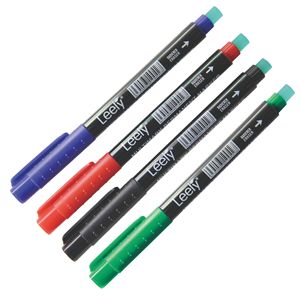




S0087 Economico Giappone punta documentale inchiostro CD pennarello
0,09 USD - 0,11 USD
Ordine minimo: 10000 parti
Spedizione per pezzo: 0,00 USD






Pennarello acrilico a base d'acqua Jumbo da 10mm con punta di importazione giapponese
0,58 USD - 0,60 USD
Ordine minimo: 100 parti
Spedizione per pezzo: 1,05 USD






Penna a sfera galleggiante liquida fai-da-te creativa Non tossica in olio giapponese penna a sfera a tubo vuoto con Glitter colorati fai-da-te con goccia appesa in cristallo
0,65 USD - 1,25 USD
Ordine minimo: 2 parti
Spedizione per pezzo: 2,21 USD






Arrtx ALP40 Set di pennarelli a colori pastello penne da disegno Manga a doppia testa per il Design dell'illustrazione Anime
14,00 USD - 17,00 USD
Ordine minimo: 12 unità

Penna a sfera a sfera con diamante sottile in cristallo giapponese sfuso con Glitter galleggianti personalizzati
0,52 USD - 0,60 USD
Ordine minimo: 500 parti






Penne con segno d'argento penna Gel antiscivolo ricarica 0.5mm giappone nero blu rosso firma penna per ufficio scuola forniture regalo di compleanno
0,39 USD - 0,41 USD
Ordine minimo: 50 parti
Spedizione per pezzo: 0,39 USD






2024 personalizzato cancelleria temperatura bianco gel di plastica penna inchiostro con logo personalizzato per il giappone corea
0,20 USD - 0,27 USD
Ordine minimo: 100 parti



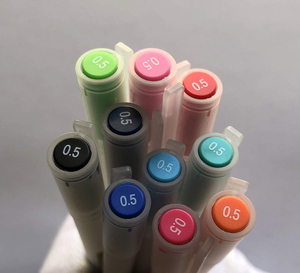
Materia prima Per La Produzione di Penna Giappone Importazione di Plastica A Buon Mercato Nero 0.5 millimetri Mujj Inchiostro Gel Penna A Sfera Ricariche
0,02 USD - 0,35 USD
Ordine minimo: 5000 parti






Hot-selling Double Sided Vernice Disegno tavolo da disegno Penna di Indicatore Dell'inchiostro Alcol Marcatore Permanente Con Proiettile Giapponese E Punta a Scalpello
0,21 USD - 0,25 USD
Ordine minimo: 100 parti






Superior 216 Colori Alcol Vernice Molle Doppia Testa Pennarello Indelebile Penna set Giappone Importazione di Punta Non-tossico
0,50 USD - 0,70 USD
Ordine minimo: 500 parti






Giappone carino Kawaii Halloween penne divertente zucca fantasma pipistrello penna Gel cancellabile bambini ragazze cancelleria scuola ufficio Kawai cose
0,10 USD - 0,18 USD
Ordine minimo: 20 parti
Spedizione per pezzo: 0,82 USD






Penna di disegno della frutta del giappone della cancelleria coreana adorabile all'ingrosso per la scuola o l'ufficio 2447
0,92 USD - 1,30 USD
Ordine minimo: 50 parti
Spedizione per pezzo: 0,96 USD






Cancelleria coreana giapponese simpatica penna a inchiostro a nucleo multiplo da 0.5mm Mini penne a sfera 6 In 1 penna multicolore
0,20 USD - 0,29 USD
Ordine minimo: 500 parti






Simpatico personaggio dei cartoni animati penna a sfera con due colori diversi ricariche
0,09 USD - 0,15 USD
Ordine minimo: 5000 parti






Set di penne a inchiostro Gel MUJIs di marca giapponese di vendita calda 0.38mm 0.5mm penna a sfera di colore nero/rosso/blu per la scuola dell'ufficio
0,19 USD - 0,30 USD
Ordine minimo: 500 parti






Liquido gesso marcatori bistro finestra pennarello per tutte le superfici non porose
0,20 USD - 0,50 USD
Ordine minimo: 100 parti






Penna Gel uni-ball one F limitata nuovo colore inchiostro nero 0.38 penna a sfera automatica 0.5mm UMNSFT
2,57 USD
Ordine minimo: 1 parte
Spedizione per pezzo: 36,60 USD
Migliori categorie
Su penna japan
Alibaba.com offre prodotti 695 penna japan. È disponibile una vasta gamma di varietà di penna japan, quali no. È inoltre possibile scegliere tra di plastica, di alluminio, e in acciaio inox penna japan. Così come da sì penna japan. E se il penna japan è 0.38 millimetri, 6 millimetri.

